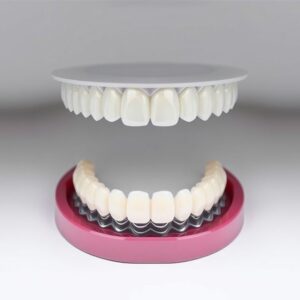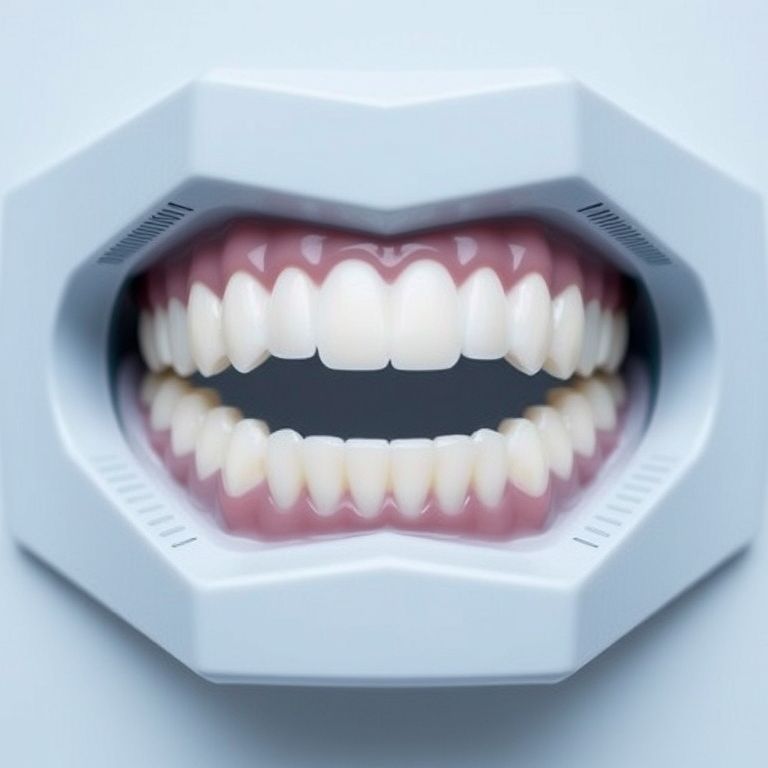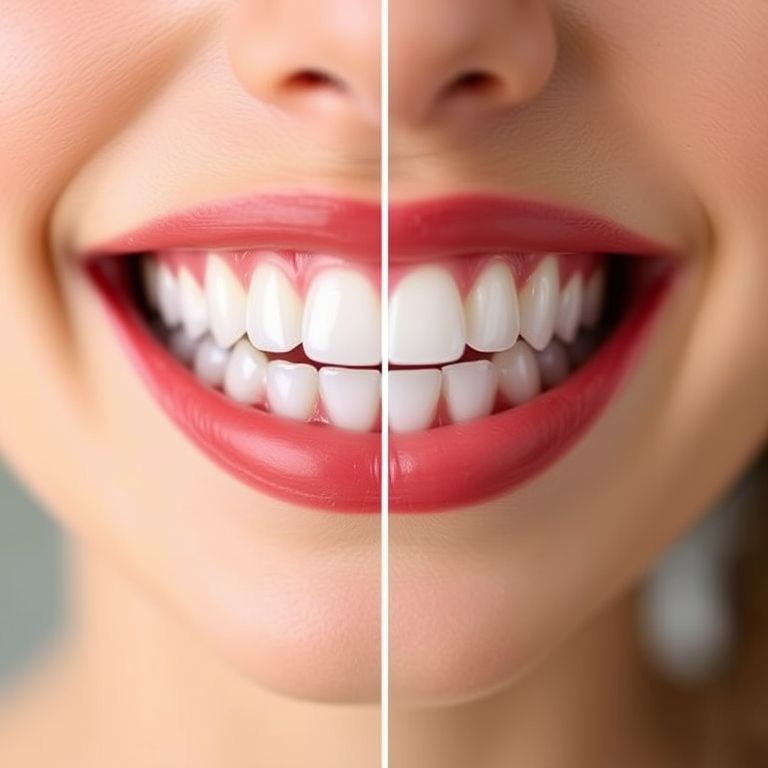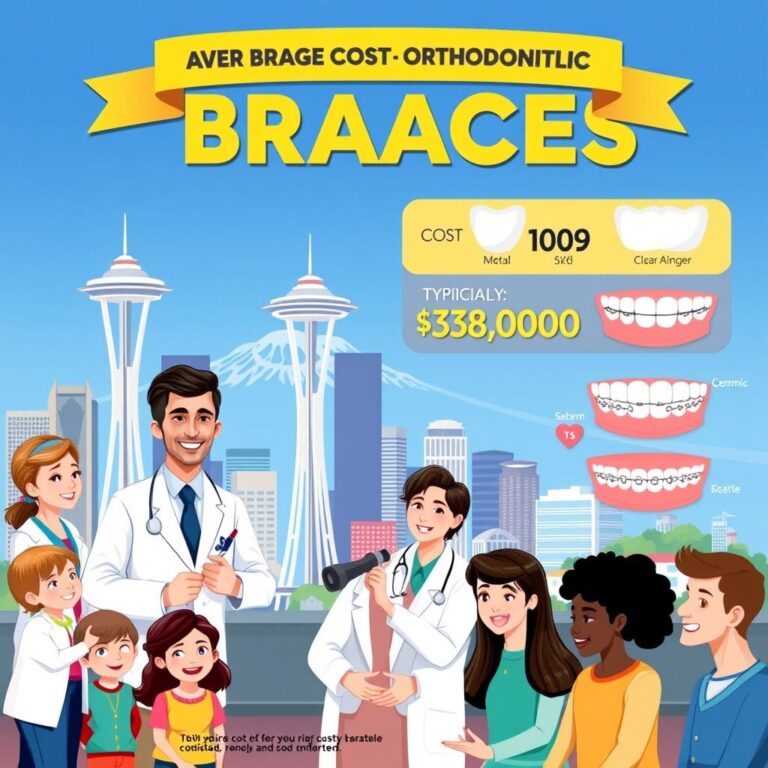The Complete Guide to the average cost of bottom braces
When we envision a perfect smile, our attention is often drawn upward to the prominent, camera-ready upper teeth. However, the foundation of a truly healthy, functional, and aesthetically balanced smile lies just below—in the alignment of the lower arch. The decision to pursue orthodontic treatment for the bottom teeth is frequently motivated by more than cosmetic desire; it is a commitment to long-term oral health, bite stability, and the prevention of future dental complications. Yet, for many considering this path, the first and most daunting question is one of cost. “How much do bottom braces cost?” seems like a simple query, but the answer is a complex tapestry woven from clinical necessity, technological choice, and economic reality.
This article is designed to be the definitive guide, unraveling that complexity layer by layer. We will move beyond generic, one-size-fits-all figures and delve into the nuanced factors that determine your personal investment. We will explore not only the national averages but also the “why” behind the numbers, empowering you with the knowledge to have informed discussions with your orthodontist. From the robust reliability of traditional metal to the discreet sophistication of lingual systems, we will compare and contrast every available option. Furthermore, we will provide a strategic roadmap for navigating the financial aspects, transforming a significant expenditure into a manageable and worthwhile investment in your well-being. Consider this your comprehensive playbook for understanding and undertaking the journey to a perfectly aligned lower arch.

2. Understanding the “Why”: The Functional Imperative of Lower Arch Alignment
Before dissecting the cost, it is crucial to understand the profound functional reasons for correcting lower teeth alignment. While a straight smile is undoubtedly appealing, the benefits of a well-aligned lower arch are fundamentally physiological.
-
-
-
Optimal Occlusion (Bite): The relationship between your upper and lower teeth—your bite—is the cornerstone of oral function. Misaligned lower teeth can lead to a malocclusion, which includes conditions like overbite, underbite, crossbite, and open bite. These misalignments can cause uneven wear on tooth enamel, leading to chips, fractures, and heightened sensitivity. The abnormal forces can strain the jaw muscles and temporomandibular joints (TMJ), resulting in chronic pain, headaches, and clicking or locking of the jaw.
-
Improved Oral Hygiene: Crowded or overlapping lower teeth create tight, hard-to-reach spaces that are breeding grounds for plaque and tartar accumulation. No matter how diligent your brushing and flossing, these areas are often missed, leading to a significantly increased risk of tooth decay (cavities) and periodontal (gum) disease. Straightening the teeth eliminates these plaque traps, making your daily hygiene routine exponentially more effective and safeguarding the long-term health of your teeth and gums.
-
Prevention of Abnormal Erosion: Specific misalignments, such as a deep bite where the upper teeth severely overlap the lower ones, can cause the lower incisors to bite into the palate or the backs of the upper teeth. Over time, this leads to notched erosion on the enamel, a condition that is irreversible and can compromise tooth structure.
-
Speech and Mastication: Severely misaligned teeth can interfere with the proper placement of the tongue, affecting speech clarity. Furthermore, an improper bite can hinder efficient chewing (mastication), which is the first step in the digestive process.
-
-
Therefore, when evaluating the cost of bottom braces, it is essential to reframe it not as a purely cosmetic expense but as a proactive investment in preventing far more costly and complex dental problems down the road. The price of treatment is often dwarfed by the future costs of crowns, root canals, gum therapy, or TMJ treatment that may become necessary due to untreated misalignment.
3. Deconstructing the Price Tag: A Comprehensive Look at Cost Factors
The advertised “average cost” is a starting point, but your final bill will be uniquely yours. It is determined by a confluence of factors that your orthodontist evaluates during your initial consultation.
Case Complexity: The Primary Driver of Cost
This is, without a doubt, the most significant variable. Orthodontic treatment is not a commodity; it is a customized medical service. The time, materials, and expertise required vary dramatically from person to person.
-
-
-
Minor Crowding: A patient with slight crowding requiring minimal tooth movement and a short treatment time (e.g., 6-12 months) will be at the lowest end of the cost spectrum.
-
Severe Crowding or Spacing: Significant crowding may require the extraction of teeth to create space, while large gaps (diastemas) need to be closed. Both scenarios increase the number of adjustments, the complexity of the force systems used, and the overall treatment duration (18-30 months), thereby increasing the cost.
-
Bite Correction: If the goal is to correct a malocclusion like an underbite or crossbite, the treatment plan becomes vastly more complex. This often involves the use of additional appliances beyond braces, such as elastics, palate expanders, or temporary anchorage devices (TADs or mini-screws), each adding to the total cost.
-
Impacted Teeth: Bringing an unerupted (impacted) tooth, such as a canine, into the correct position is a highly specialized procedure that requires surgical exposure and sophisticated orthodontic mechanics, commanding a premium fee.
-
-
Geographic Location: The Cost of Living Calculus
Orthodontic fees are subject to regional economic pressures. The overhead costs of running a practice—including rent, staff salaries, insurance, and utilities—are substantially higher in major metropolitan areas like New York City, San Francisco, or Boston compared to rural areas or smaller cities in the Midwest or South. Consequently, you can expect to pay more for the same treatment in a high-cost-of-living region.
Orthodontist Expertise and Practice Overhead
An orthodontist who is a recognized expert in a specific technique (e.g., lingual braces or complex surgical cases) or who has decades of experience may charge more for their specialized knowledge and proven track record. Furthermore, a state-of-the-art practice that invests in the latest digital technology—such as intraoral scanners, cone-beam computed tomography (CBCT) imaging, and accelerated orthodontic devices—may have higher fees, which can be justified by the increased precision, comfort, and potentially reduced treatment time they offer.
Type of Braces Chosen: A Spectrum of Materials and Prices
The choice of appliance is a major cost differentiator. Here’s a general hierarchy from least to most expensive:
-
-
-
Traditional Metal Braces: The most cost-effective option.
-
Ceramic Braces: Typically 10-20% more expensive than metal.
-
Self-Ligating Braces: Can be 10-15% more than traditional metal.
-
Clear Aligners (Invisalign): Often comparable to ceramic braces, but can be more for complex cases.
-
Lingual Braces: The most expensive option, often 20-50% more than traditional labial braces due to custom fabrication and application complexity.
-
-
The Role of Dental Insurance
Dental insurance with orthodontic coverage can dramatically reduce your out-of-pocket expense. Most plans that include orthodontics do so with a lifetime maximum, often between $1,000 and $2,500. This amount is typically paid as a flat benefit, regardless of the total treatment cost. It is crucial to understand your plan’s details: Is there an age limit? Does it cover adult orthodontics? Is your chosen orthodontist in-network?
Additional and Often Overlooked Expenses
The quoted fee is usually a comprehensive “global fee” that covers the entire treatment. However, it’s vital to confirm what is included. Potential additional costs can include:
-
-
-
Initial Diagnostic Records: The cost of X-rays, photographs, and digital scans, which can range from $150 to $400, is sometimes billed separately.
-
Retainers: This is a critical post-treatment cost. The fee for your permanent (bonded) and/or removable retainers ($200 – $600 per set) may or may not be included in the global fee. Retainers are non-negotiable for maintaining your results, so this cost must be factored in.
-
Broken Appliance Fees: If a bracket breaks or a wire snaps due to not following dietary guidelines (e.g., eating hard or sticky foods), you may be charged a repair fee.
-
Late Payment Fees: As with any payment plan, missed payments can incur fees.
-
-
4. The National Landscape: What Are the Real Numbers?
With the understanding that your cost will be personalized, we can examine national averages to establish a baseline. It is important to note that orthodontic fees are most commonly quoted as a single fee for full treatment of both arches (upper and lower). However, for cases where only the bottom arch requires significant correction, a partial treatment fee is sometimes an option, which will be lower.
The following table provides a detailed breakdown of estimated costs for different scenarios and brace types. These figures are national averages for the total treatment and can vary significantly.
Orthodontic Cost Breakdown Table (Full Treatment, Upper & Lower Arch)
| Treatment Type / Scenario | Estimated Total Cost Range | Key Characteristics & Cost Drivers |
|---|---|---|
| Full Traditional Metal Braces (Standard Case) | $3,000 – $7,000 | Most common and cost-effective. Durable and efficient for all case types. |
| Full Ceramic Braces | $4,000 – $8,500 | Aesthetic, tooth-colored brackets. More fragile than metal; can be prone to staining without careful hygiene. |
| Full Self-Ligating Braces | $4,000 – $8,000 | May reduce friction, potentially shortening treatment time. Easier to clean than traditional braces. |
| Invisalign / Clear Aligners (Comprehensive) | $3,500 – $8,000 | Removable and nearly invisible. Cost depends on case complexity and number of aligner trays required. Discipline to wear 22+ hours/day is crucial. |
| Lingual Braces (Incognito, etc.) | $8,000 – $12,000+ | Completely hidden as they are behind the teeth. Custom-made for each tooth. Highest cost due to lab fees and technical expertise required. |
| “Bottom Braces Only” (Partial Treatment) | $1,500 – $5,000 | Highly variable. Cost is entirely dependent on the complexity of the lower arch issues. Simple, short-term cases are at the low end; complex bite corrections are at the high end. |
| Complex Cases (Surgery, TADs, etc.) | $7,000 – $15,000+ | Involves orthognathic surgery, multiple extractions, mini-screws (TADs), or other specialized appliances. |
Illustration: A visual comparison of the different brace types, showing their placement and aesthetic appeal.
5. A Deep Dive into Types of Bottom Braces and Their Costs
Let’s explore the specific considerations and cost implications for each type of appliance when applied to the lower arch.
Traditional Metal Braces
Description: These are the modern, streamlined version of the braces everyone pictures. They consist of high-grade stainless steel brackets bonded to the front of the teeth, connected by an archwire, and secured with tiny elastic bands (ligatures).
Pros for Bottom Teeth:
-
-
-
Durability: The lower teeth endure tremendous biting forces. Metal braces are the strongest and least likely to break.
-
Efficiency: They provide highly predictable and efficient control over tooth movement, which is especially important for the often-densely packed lower incisors.
-
Cost-Effectiveness: They are the most affordable option.
Cons: -
Aesthetics: They are the most noticeable type of brace.
-
Discomfort: The brackets can sometimes irritate the inside of the lip.
-
Oral Hygiene: Requires diligent cleaning around the brackets and wires.
Average Cost for Full Treatment: $3,000 – $7,000.
-
-
Ceramic Braces
Description: These function identically to metal braces but use tooth-colored or clear ceramic brackets to blend in with the natural tooth color.
Pros for Bottom Teeth:
-
-
-
Aesthetics: Far less noticeable than metal braces from a conversational distance.
-
Effectiveness: Offer similar control to metal braces for most cases.
Cons: -
Fragility: Ceramic is more brittle than metal and can be prone to breaking, which could lead to repair costs and extended treatment time.
-
Friction: They can generate more friction than metal, potentially slowing tooth movement slightly.
-
Staining: The clear or white ligatures can stain from coffee, tea, or curry if proper care isn’t taken.
Average Cost for Full Treatment: $4,000 – $8,500.
-
-
Lingual Braces
Description: These are custom-made metal braces that are bonded to the back (lingual) surfaces of the teeth, making them completely invisible from the front.
Pros for Bottom Teeth:
-
-
-
Ultimate Aesthetics: The gold standard for discreet fixed appliances. No one will know you are undergoing treatment.
-
Effective for Complex Movements: Excellent control, similar to traditional braces.
Cons for Bottom Teeth: -
Cost: The most expensive option due to custom fabrication.
-
Comfort and Adaptation: They can cause significant initial tongue irritation and may temporarily affect speech (a “lisp”) until the tongue adapts, which can be more pronounced on the lower arch due to tongue proximity.
-
Oral Hygiene: Cleaning is more challenging as the brackets are hidden from view.
Average Cost for Full Treatment: $8,000 – $12,000+.
-
-
Self-Ligating Braces
Description: These can be metal or ceramic. They use a built-in clip or door mechanism to hold the archwire, eliminating the need for elastic ligatures.
Pros for Bottom Teeth:
-
-
-
Reduced Friction: Can allow for faster tooth movement in some cases, potentially shortening treatment time.
-
Easier Cleaning: Fewer components can make them easier to keep clean.
-
Fewer Adjustments: May require slightly less frequent adjustments.
Cons: -
Cost: More expensive than traditional braces.
-
Not for Every Case: May not be suitable for all types of tooth movements.
Average Cost for Full Treatment: $4,000 – $8,000.
-
-
Clear Aligners (Invisalign) for Lower Teeth
Description: A series of custom-made, clear, removable plastic trays that gradually shift the teeth.
Pros for Bottom Teeth:
-
-
-
Aesthetics: Nearly invisible.
-
Removability: Allows for easy eating, brushing, and flossing, promoting excellent oral hygiene.
-
Comfort: No metal brackets or wires to cause irritation.
Cons for Bottom Teeth: -
Discipline Dependent: Success hinges on the patient’s commitment to wearing the aligners for 20-22 hours per day. Forgetting to wear them can derail treatment.
-
Limited for Complex Cases: While technology has advanced, severe rotations or extrusions may still be better handled by fixed braces.
-
Attachments: Most cases require tooth-colored “attachments” to be bonded to the teeth to facilitate certain movements, which can make the treatment slightly more visible.
Average Cost for Full Treatment: $3,500 – $8,000.
-
-
Illustration: A diagram showing how teeth move incrementally with each set of clear aligners.
6. The Financial Pathway: Making Orthodontics Affordable
A significant price tag should not be a barrier to treatment. Orthodontists are accustomed to working with patients to make care accessible.
Dental Insurance Demystified
Your first step is to contact your insurance provider and ask:
-
-
-
Do I have orthodontic coverage?
-
What is the lifetime maximum? (e.g., $1,500)
-
Is there an age limit? (Some plans only cover patients under 18).
-
Is pre-authorization required?
-
Do I need a referral from my general dentist?
-
-
The orthodontic office will typically file the insurance paperwork for you. The benefit is usually paid directly to the provider, and it’s often distributed over the course of treatment.
Flexible Spending Accounts (FSAs) and Health Savings Accounts (HSAs)
These are powerful tools for saving money on orthodontics with pre-tax dollars.
-
-
-
FSAs: Allow you to set aside pre-tax money from your paycheck for medical expenses. The key feature is “use-it-or-lose-it,” so you must carefully estimate your expenses for the plan year. Orthodontics is a qualifying expense, and a unique rule allows you to use the entire annual election amount at the beginning of the plan year, even if you haven’t contributed all of it yet, as long as the treatment is paid for in full.
-
HSAs: Available with high-deductible health plans. Contributions are also pre-tax, but the funds roll over year to year and are yours to keep. They can also be used for qualified medical expenses, including orthodontics.
-
-
In-House Payment Plans and Third-Party Financing
Most orthodontic practices offer interest-free monthly payment plans that spread the cost of treatment over the duration of care, often with a small down payment. This is often the most cost-effective financing method as it avoids interest charges.
For longer-term financing, third-party companies like CareCredit or Alphaeon Credit offer medical credit lines with promotional periods of no or low interest if paid in full within a specific timeframe (e.g., 6, 12, or 24 months). It is crucial to read the terms carefully, as deferred interest can be applied retroactively if the balance is not paid by the end of the promotional period.
7. The Consultation: Your Key to an Accurate Quote
The single most important step in your journey is the initial consultation. This is not a commitment to treatment but an opportunity for a professional assessment. Come prepared with questions:
-
-
-
What is the exact diagnosis of my lower arch?
-
What are the treatment goals?
-
What brace types are suitable for my case, and what are the pros/cons of each?
-
What is the estimated treatment time?
-
What is the total comprehensive fee, and what exactly does it include (e.g., retainers, emergency visits)?
-
Can you provide a detailed breakdown of what my insurance will cover and my expected out-of-pocket cost?
-
What payment plan options do you offer?
-
-
A reputable orthodontist will provide a clear, written treatment plan and financial agreement before any treatment begins.
8. Conclusion: An Investment in Form, Function, and Confidence
The journey to a properly aligned lower arch, supported by bottom braces, is a multifaceted investment that pays dividends for a lifetime. The cost, while significant, is a reflection of personalized care, advanced technology, and professional expertise aimed at achieving optimal oral health. By understanding the factors that influence price, exploring the full spectrum of appliance options, and leveraging available financial tools, this investment becomes not only manageable but also one of the most valuable decisions you can make for your long-term well-being and self-assurance.
9. Frequently Asked Questions (FAQs)
Q1: Can I get braces on just my bottom teeth?
A: Yes, it is possible in specific circumstances, often when the upper teeth are already well-aligned and the bite relationship is stable. This is known as limited or partial orthodontic treatment. However, many bite issues require the coordinated movement of both arches to achieve a stable and functional result. Your orthodontist will determine if single-arch treatment is appropriate for you.
Q2: Are bottom braces less expensive than top braces?
A: Not inherently. The cost is based on the complexity of the case, not the arch. However, if you are only treating the bottom arch (partial treatment), the total fee will be lower than treating both arches. The per-arch cost for a full two-arch treatment is typically bundled into one fee.
Q3: How long will I need to wear bottom braces?
A: Treatment time varies widely based on the issues being corrected. Simple cases may take as little as 6-12 months, while more complex crowding or bite corrections can take 18-30 months. Your orthodontist will provide an estimated timeline during your consultation.
Q4: Do bottom braces hurt more than top braces?
A: The initial soreness after placement and adjustments is similar for both arches. Some people find that bottom braces can irritate the lower lip more, while others find the top braces irritate the cheeks. Using orthodontic wax to cover any irritating brackets can provide immediate relief.
Q5: What is the best type of braces for the bottom teeth?
A: There is no single “best” type. The ideal choice depends on your priorities:
-
-
-
Durability & Cost: Traditional Metal.
-
Aesthetics & Effectiveness: Ceramic or Clear Aligners.
-
Ultimate Discretion: Lingual Braces.
Discuss your lifestyle, aesthetic concerns, and budget with your orthodontist to find the best fit.
-
-
10. Additional Resources
-
-
American Association of Orthodontists (AAO): https://www.aaoinfo.org/ – A trusted resource for finding an AAO-member orthodontist and learning about treatment options.
-
Consumer Guide to Orthodontics: An independent site offering detailed explanations of procedures and costs.
-
Date: September 30, 2025
Author: The Orthodontic Insights Team
Disclaimer: The information provided in this article is for educational and informational purposes only and does not constitute professional medical or financial advice. The cost of orthodontic treatment can vary significantly based on individual circumstances, geographic location, and provider. Always consult with a licensed orthodontist for a personalized assessment and treatment plan.


